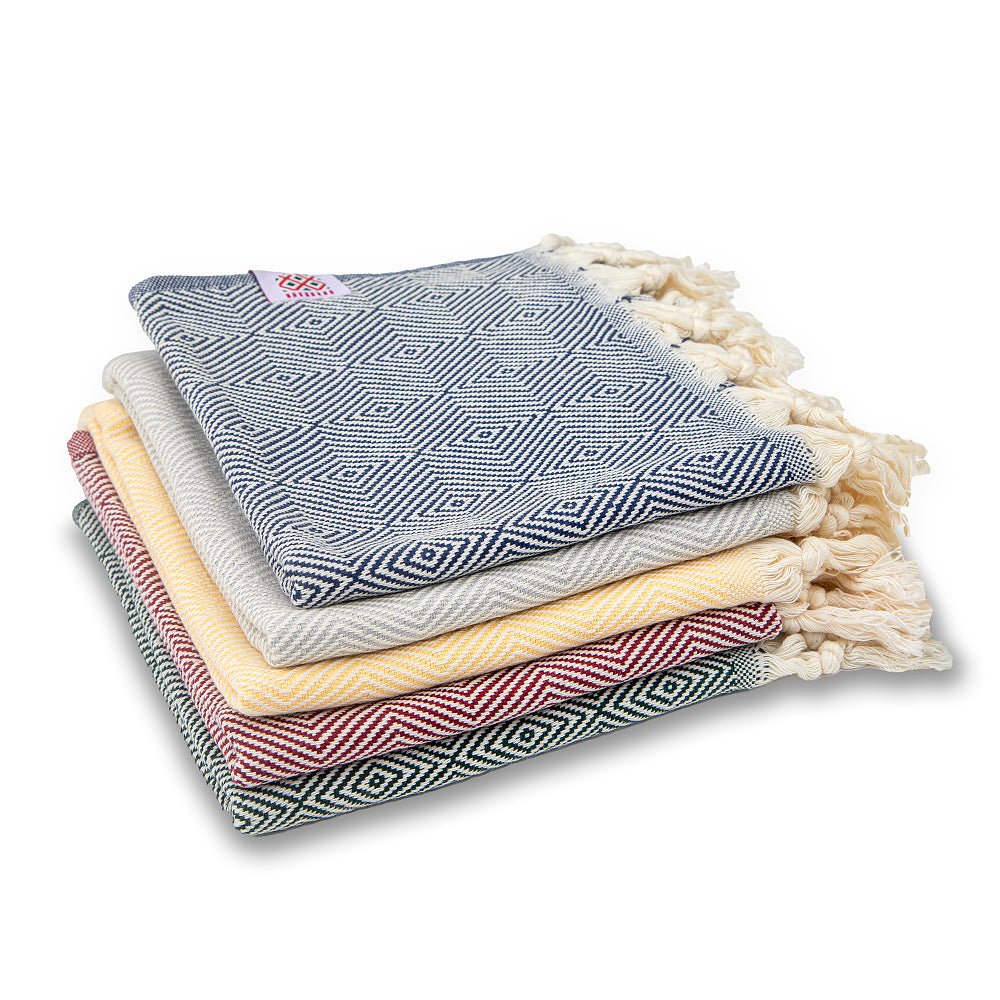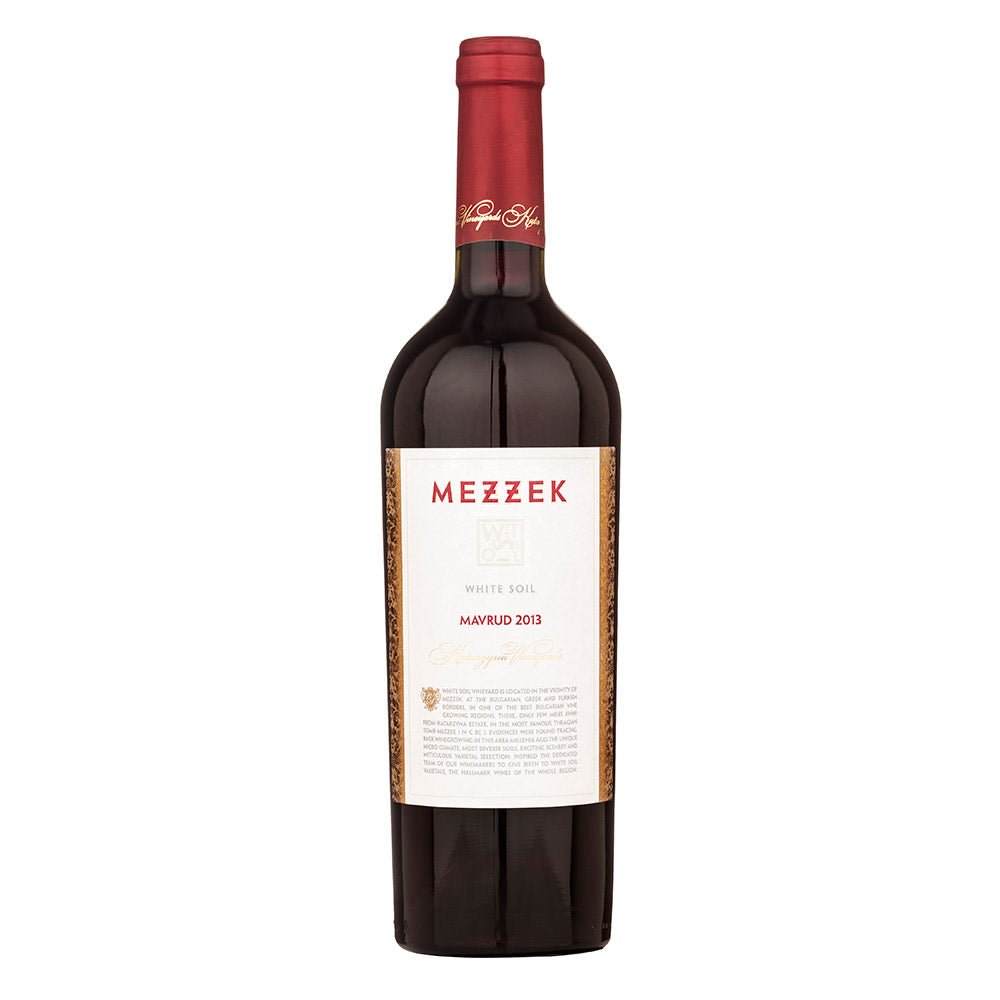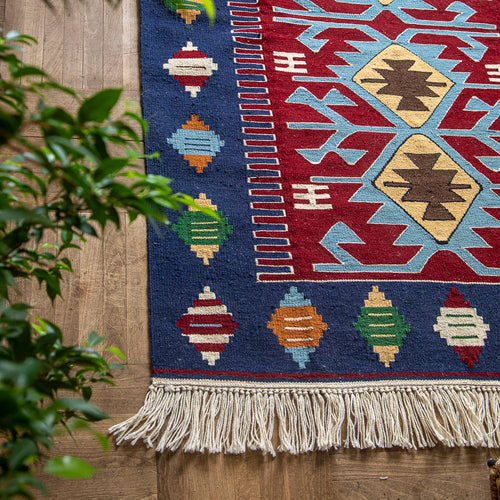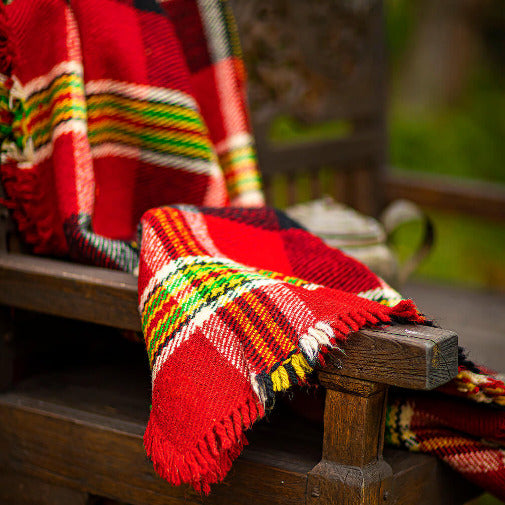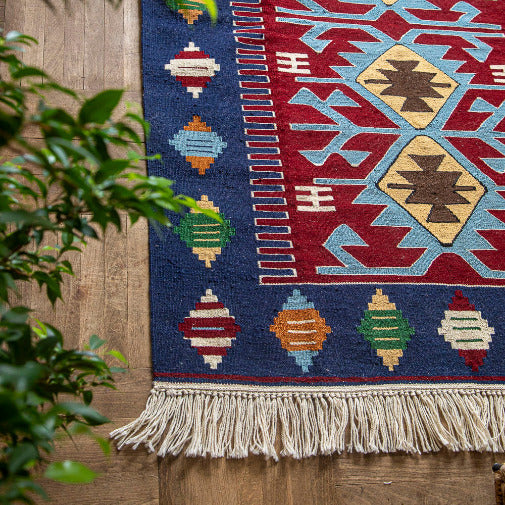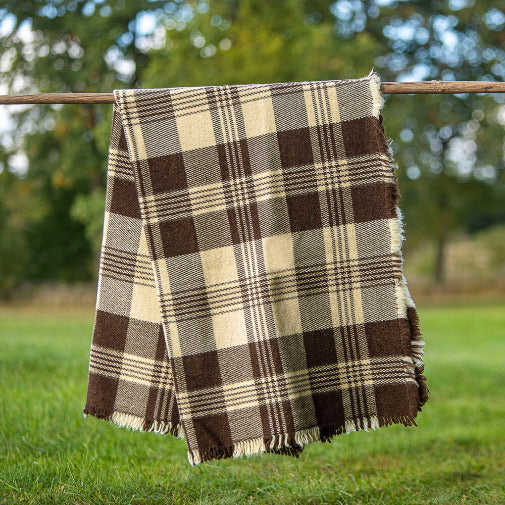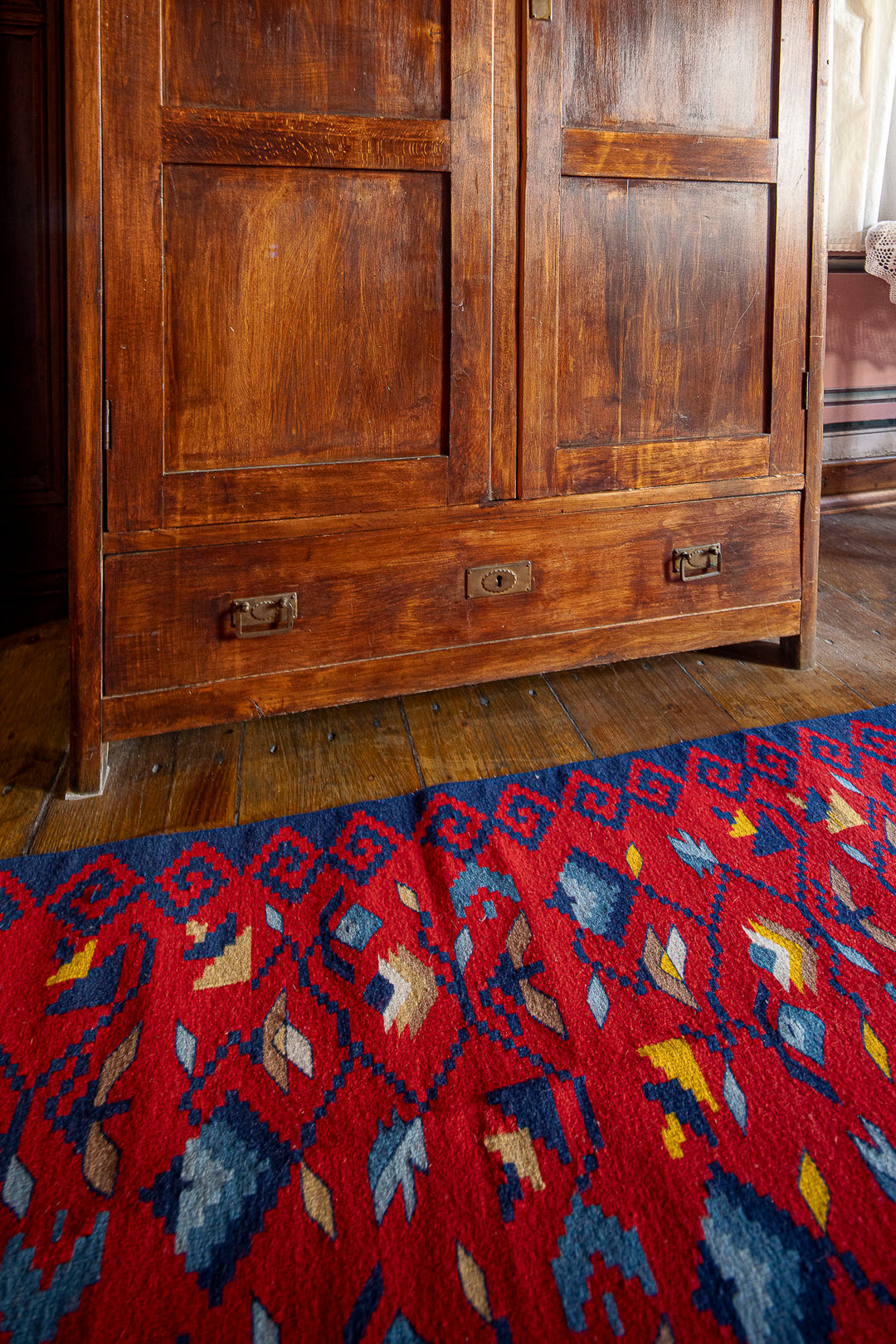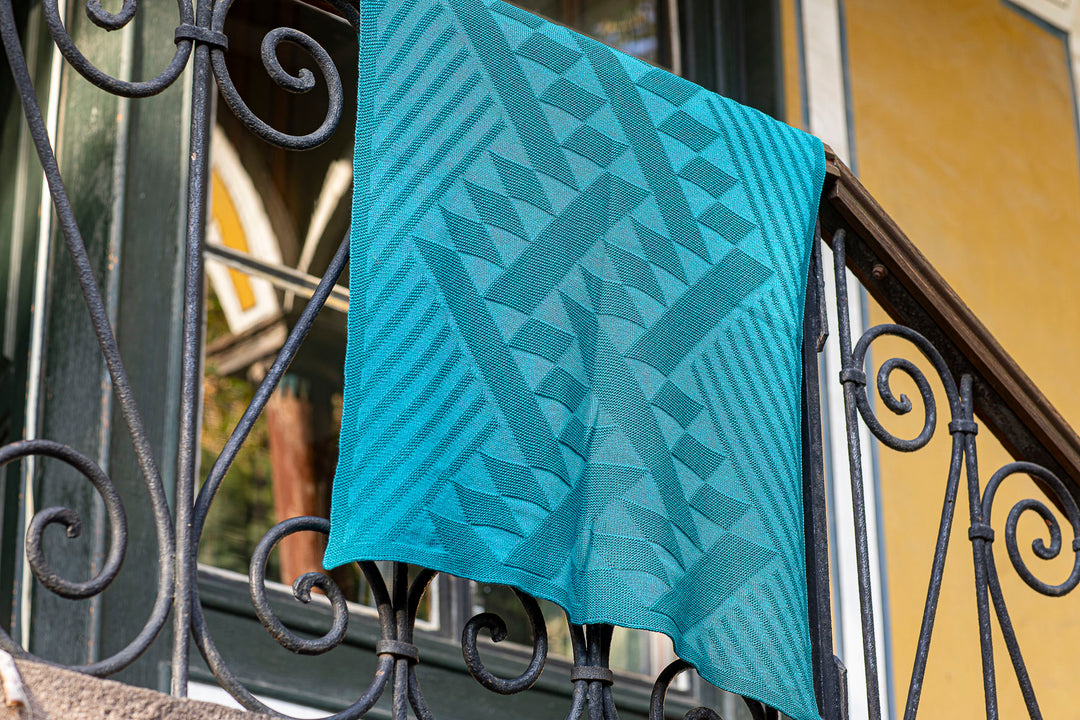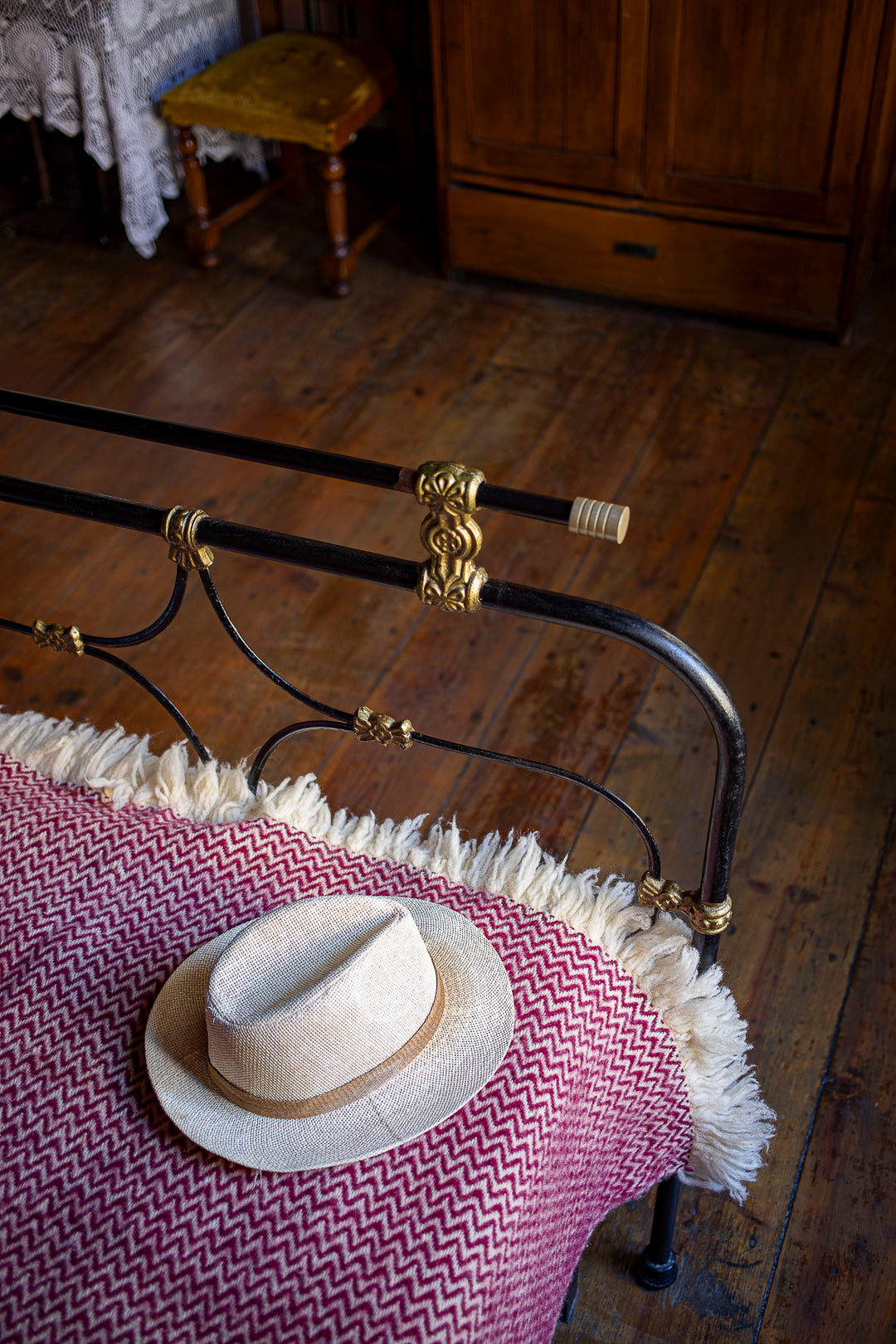How to choose a wool blanket?
It's a good idea to spend some time choosing a wool blanket, as it can keep you company for a lifetime. In this article, we introduce Balkanova blankets and help you navigate their wide range.
Big or small?
If we start by dividing by size, a large part of our blankets come in the classic "blanket" size, which we consider to be 150×200 cm or close variants. It's probably the most versatile size with a wide range of uses - it can be used as a throw for a sofa or couch, a plaid to wrap yourself up in for an early evening read with tea or a wrap over the legs of a rocking chair, a blanket covered with bed linen can be used as a cosy blanket for sleeping. So if you need the most versatile blanket, we recommend choosing one with a size of 150×200 cm. You will find 150×200 cm blankets in the Rodopa, Karandila, Kostadina, Gergana, Abata, Kaliakra, Marina, Perelika, Galata, Nara and Elma ranges. In the last two lines you can also find a 130×170 cm size. These can thus be used as a versatile, easily portable wrap.
If you're choosing a blanket for your little one, whether newborn or older, look for the 100×150 cm, 80×100 cm and 60×120 cm sizes. The 100×150 size is compatible with regular baby bedding sizes. You can safely use the unmade blanket to cover your baby in the stroller or use it as a travel blanket not only for your baby, but also for an adult. For example, when travelling by bus, train, etc., such a blanket will do you an excellent service, as it is always at hand and does not take up much space in your luggage. These are the Perelika or Gergana baby blankets.
Some blankets are also available in the newborn size 80x100 cm , which is a classic stroller blanket or for covering the newest and smallest member of the family. And then there is the specific size 60x120 cm. This is a blanket that you can use as a mattress pad for the cot. Unlike rubber or plastic mattress protectors, the blanket is breathable. In addition, wool has natural water-repellent properties and can usually protect the mattress in the event of minor accidents and from soiling. You can further increase the impermeability by using a suitable wool treatment product containing lanolin. Its size is the same as the most commonly used cot mattress size.
All undyed merino blankets, regardless of size, have been laboratory tested by a certified textile fibre laboratory and found to meet the strict requirements for the baby label - i.e. they are certified for use with children from newborn to three years of age. We had the undyed merino from which we make the children's sizes certified. All products made from this certified undyed merino are marked with a baby head symbol with the description Certified for children under three years old, which can be found on the product page under each certified merino blanket.
In larger sizes, we offer some of the blankets from the Rodopa and especially the Karandila range. This is the 200×220 cm size, but also 210x230 cm, which is a bedspread over a double bed, if you like, or a king-sized bed. Blankets in this size are characterized by a higher grammage (weight), thanks to which they hold their shape well on the bed during the day. At night, you can either put the blanket aside or use it with a fitted sheet as a second layer of blankets in the winter months. Our monochrome or subtle multi-coloured patterns are sure to suitably complete the aesthetic of your temple of restful sleep.
In or out?
The size of 160×220 cm and its variants is typical of the Rainbow blankets, which have, among other things, a very interesting history. It is important to know, however, that Rainbow is a classic blanket for outdoor use, if you want to go outdoors. Due to its high grammage, it is a very warm blanket, suitable for tenting, camping or as a sleeping bag throughout the year. The blanket is very sturdy, long lasting, strong and, due to the "patched" finish used, organic dirt will be less likely to be trapped and deposited on it in the outdoors. The blanket in this range is characterised by its combination of bright colours and stripes, which means that it can also be used as a striking element in an interior - for example as a throw over a sofa or bed. It is good to know that we also have Rainbow blankets in the size 160x240 cm and even 160x260 cm or 160x270 cm, so even the biggest of long-legged people will find something to suit them. Both sizes can be well used as an interesting curtain, therefore as an insulating wall. Wool, as we know, is one of the best insulators and Rainbow with its typical density serves well as a screen or vestibule at the entrance to the building - this is how we use it in our shop.
The Rodopa and Perelika plaid blankets are definitely among the blankets that can also be used for outdoor activities. For centuries, they have proven their durability and quality that will last for generations. Thanks to their high grammage, Rodopa and Rainbow are the warmest blankets in our range and are therefore suitable for outdoor use throughout the year. And just for the record, Rodopa blankets are classics that are among the symbols of every mountain house in Bulgaria. Rodopa will serve you outdoors all year round, while its sister Perelika, due to its lower weight, is more likely to be used only in the spring/autumn season, e.g. as a blanket for cool evenings on the terrace. Its colourful decor makes it a striking addition to the living room, a throw over a divan, etc. Other blankets, especially those made of merino wool, are more suitable as interior blankets due to the greater delicacy of the fibres. Similarly, Karandila blankets are more suited for indoors due to their brushed surface.
With or without fringe?
The Perelika, Elma or Galata blanket is decorated with hand-braided and knotted longer fringes. The same applies to the merino wool blankets Marina, Kostadina, Ledenika or Kaliakra. They all have beautiful hand-knotted decorative fringes about 10 cm long. Blankets like Karandila or Rodopa also, but they are shorter and not braided. Rainbow or Gergana blankets, on the other hand, have edges edged with thick thread - they have so-called entwining. This is particularly useful if you want to cover the blanket and use it as a quilt. A blanket without fringes, such as Gergana, or with short fringes, such as Rodopa, fits and holds its shape much better in the bedding. If you are choosing a blanket for sleeping, for practical reasons, we recommend you to choose a blanket without fringes, the fringes will emphasize the typical appearance of the blanket and its decorative role in the home.
Soft or rustic? And what does that mean?
The fineness of wool can be judged in several ways. Whether or not a blanket feels soft to the touch is largely a subjective feeling. What feels good to one person may not to another. And so it is with wool. For your ease of reference, the softness of each blanket is indicated by one of the grades on a five-point scale from the coarsest to the softest: rustic - classic - soft - very soft - extra soft.
If you are one of those who prefer soft materials and would still like a wool blanket, then we recommend looking at blankets marked as either very soft or extra soft. Our merino blankets fall into the extra soft category. These are truly very soft blankets and are the most comparable in softness to cotton of all our blankets. All Perelika Merino, Kostadina, Marina, Kaliakra, Ledenika, Gergana or Rodopa Merino blankets are really soft and can be used by children. Especially the Gergana blanket is a bit softer than the other merino blankets due to the merino used and the pleated surface. From personal experience we have verified the use of our merino blankets for children from birth. As children grow and their needs and ours change, we are also enriching our range. For example, the Gergana blanket in the size 60x120 cm (used as a mattress protector) was added to our range at the express request of our customers - mothers.
In the category of extra soft blankets you will find merino blankets of the Perelika Merino and Marina series, which are even softer than our classic merino blankets. How is this possible? The merino blankets included in the extra fine category are made from merino yarn with a wool fibre thickness of 25 microns. Merino blankets in the extra fine category are made from merino wool just 19-21 microns thick. There is a direct proportion between the thickness of the fibre and the softness of the resulting material. The finer the fibre, the softer the blanket. Realistically, this is a similar difference to that between cotton and silk. So it really is the ultimate in softness!
The other three grades denote blankets that are made primarily from local Bulgarian or Turkish wool, which is characterised by a slightly greater thickness of fibre (fibre thickness is calculated in microns for wool). The thicker the fibre, the less fine the wool. Finally, the finish of the blanket also comes into play, which has the ability to soften the blanket to a level of feel only slightly lower than merino blankets. This is the case with our Karandila interior blankets with a brushed finish that feels very soft to the touch (listed as soft in our scale).
Generally speaking, blankets made of fine material or with a finer surface are a little more delicate. Blankets that can be rated as larger "holders" that can handle extreme conditions and outdoor use are also, by logic, a bit rougher (labeled as classic and rustic in our range), but even these will soften with time and use. This process can be accelerated by washing the blanket while following our maintenance instructions. Therefore, even with blankets of this specified softness (rustic, classic), a certain softening of the surface can be achieved over time without the blanket losing its density and robustness.
Natural or dyed?
Essentially all blankets that are in shades of white, off-white, ivory or amber, as well as blankets in various shades of brown and grey, are made from undyed wool. If you are a lover of the original natural look, then these blankets are the right choice for you. For those that are made only of undyed wool (Rodopa, Karandila, Abata, Perelika, Elma, etc.), you will find the symbol "Made of natural undyed wool" under the picture. Other blankets in the range are also made from undyed yarn - this is like white, grey or brown, used as the main backing colour and can make up more than 80% of the material. However, as these blankets also contain dyed yarn, they are no longer marked with the symbol above. Blankets made from undyed yarn may initially smell more of wool - i.e. sheep fat lanolin. This is a natural characteristic which is a real indicator of the naturalness of the material. Over time, the aroma of lanolin will wear off from the blanket, but if it bothers you, you can speed up the process by washing the blanket following the care instructions. The vast majority of our blankets are made from wool that has been cleaned only mechanically, without the use of carbonization (chemical cleaning in sulfuric acid) and without the use of detergents. They thus retain many of the qualities that have been appreciated in this natural material since time immemorial.
We hope that this article has helped you to find your way around wool blankets. If you choose adequately for your needs, taking into account the above information, we are confident that the blanket will serve you well for many decades. If you didn't find information in the article that interests you, please email us at info@balkanova.eco.



